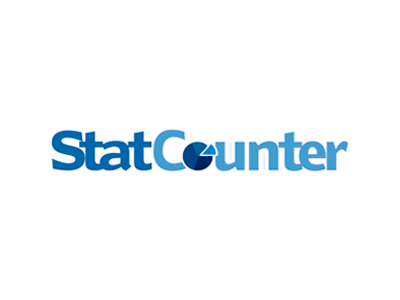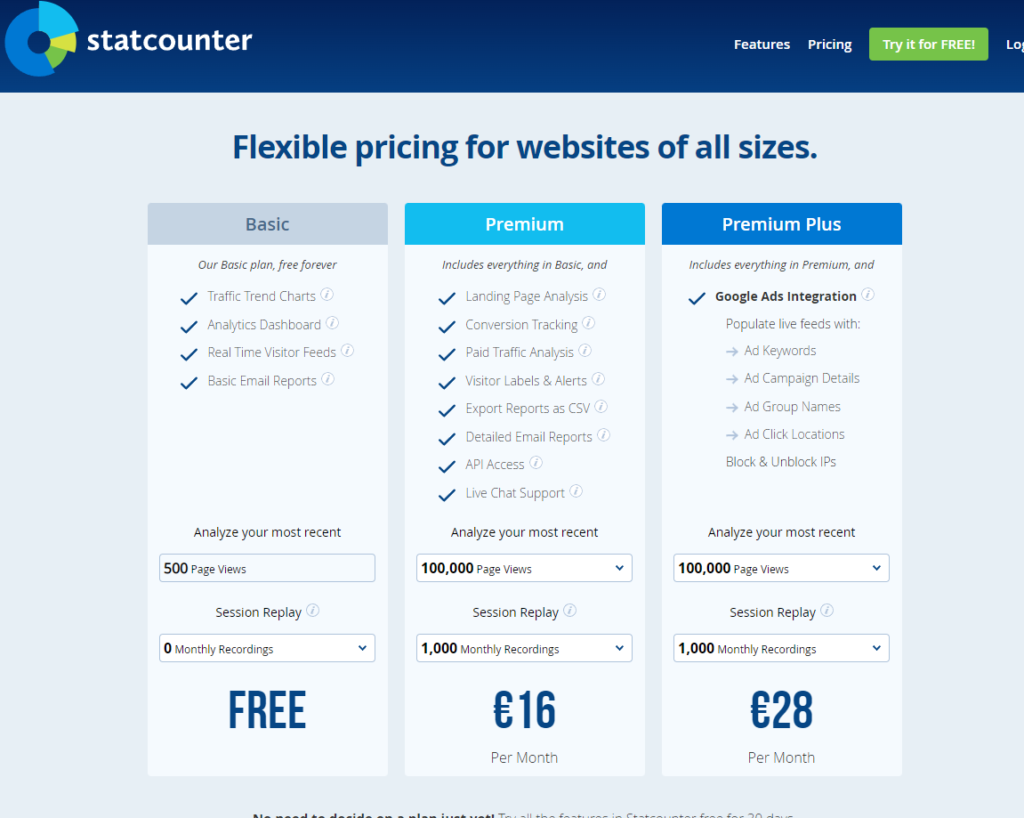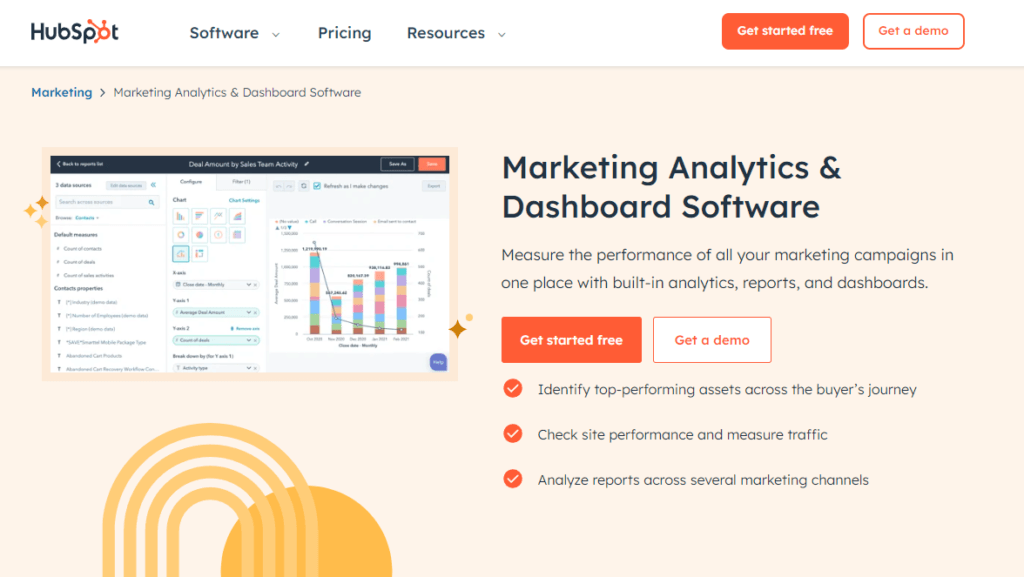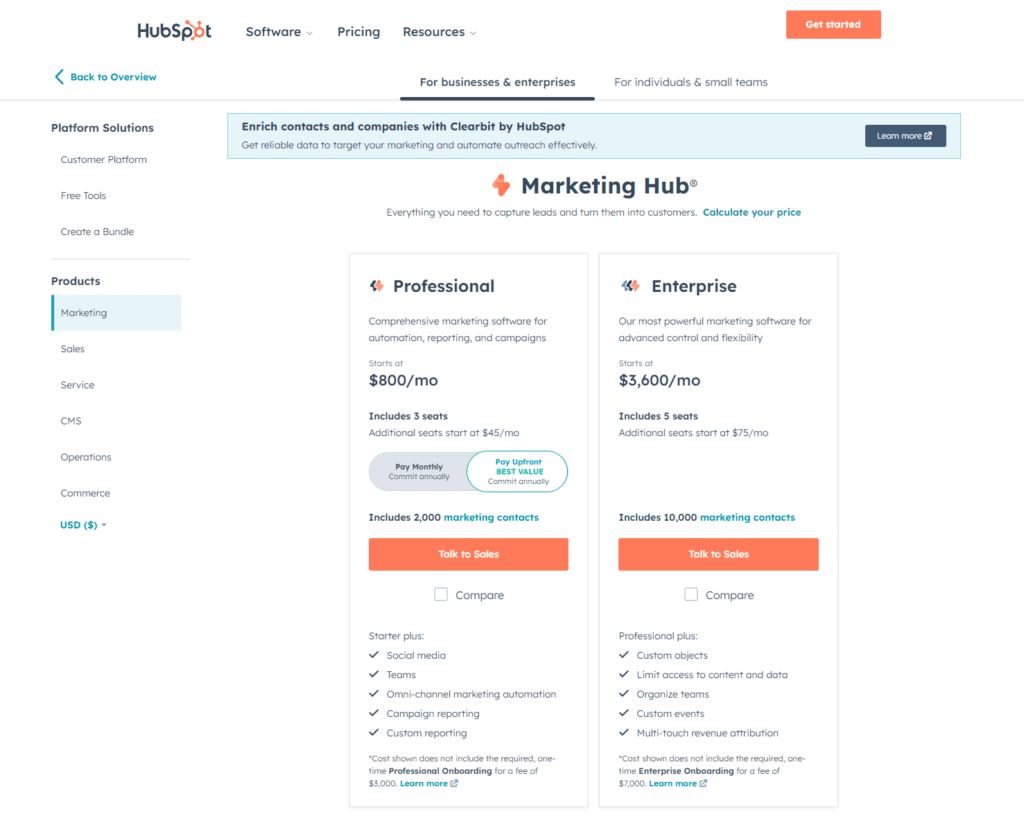In the digital age, understanding your online presence and optimizing your marketing efforts are non-negotiable for businesses aiming to thrive. Enter Statcounter and HubSpot Marketing Analytics, two titans in the realm of digital analytics, each with unique strengths tailored to different business needs. Statcounter offers straightforward, real-time web analytics, ideal for small to medium-sized businesses focusing on immediate insights into website traffic and user behavior. HubSpot Marketing Analytics, on the other hand, provides a comprehensive suite designed to not only track website performance but also deeply analyze marketing campaigns across multiple channels. Choosing between these two can feel daunting. Let’s dive into their Integration Capabilities to shed some light on which tool might be the best fit for your business.
Statcounter | HubSpot Marketing Analytics |
|---|---|
| G2 Score – 4.3 out of 5 stars | G2 Score – 4.4 out of 5 stars |
| TrustRadius Score – 9/10 | TrustRadius Score – 8.5/10 |
Integration Capabilities
The ability to integrate seamlessly with other digital tools and platforms is a crucial consideration for any analytics tool, impacting its effectiveness and the breadth of insights it can provide.
Statcounter: Straightforward Web Analytics Integration
Statcounter excels in offering a focused solution for tracking and analyzing web traffic. Its integration capabilities are primarily designed to be simple and direct, allowing users to easily embed a tracking code into their website. This simplicity ensures that businesses can quickly start monitoring website visitors, page views, and specific interactions without the need for complex setup processes. While Statcounter’s integration is primarily web-centric, its effectiveness in providing real-time data makes it a valuable tool for businesses prioritizing straightforward web analytics.
Statcounter maintains a focus on simplicity, primarily targeting businesses interested in straightforward web analytics. Its integration process is designed to be uncomplicated, enabling users to embed a tracking code into their website swiftly, facilitating immediate data collection on web traffic and visitor behavior. This level of integration suits businesses looking for essential web analytics without the complexity of integrating multiple data sources. However, for organizations seeking to consolidate data across various digital platforms to gain a holistic view of their operations, Statcounter’s straightforward approach may appear limited.
HubSpot Marketing Analytics: Comprehensive Marketing Integration
HubSpot Marketing Analytics stands out for its robust integration capabilities, designed to provide a 360-degree view of marketing efforts. It seamlessly integrates with HubSpot’s own suite of tools for CRM, email marketing, social media management, and more, ensuring that businesses can track and analyze data across all marketing channels in one place. Furthermore, HubSpot offers integrations with external platforms and services, enhancing its ability to provide comprehensive insights into marketing performance, customer journeys, and ROI across campaigns.
HubSpot Marketing Analytics offers a rich integration environment designed to provide businesses with a comprehensive overview of their marketing efforts. It seamlessly connects with HubSpot’s suite of tools, including CRM, email marketing, social media management, and more, allowing for a unified analysis of marketing data across all channels. Moreover, HubSpot’s capability to integrate with a broad range of external platforms and services means businesses can gather and analyze data from across their entire digital ecosystem in one place. This extensive integration capacity is particularly beneficial for organizations aiming to understand and optimize their marketing strategies deeply.
Reporting and Dashboard Features
The way data is presented and can be customized within these platforms not only affects the user experience but also influences the depth of insights that can be drawn to inform business decisions. A robust analytics platform should offer not just comprehensive data collection but also powerful reporting tools that allow users to visualize data in meaningful ways.
Statcounter: Simplified Reporting for Immediate Insights
Statcounter provides a streamlined approach to reporting, offering a set of predefined reports that cover the basics of web analytics, including visitor counts, traffic sources, and geographic locations. Its dashboard is intuitively designed for ease of use, allowing users to quickly navigate through different reports and gain immediate insights into their website’s performance. While Statcounter’s reporting features are somewhat limited in scope and customization, they serve the needs of users looking for straightforward analytics without the bells and whistles.
HubSpot Marketing Analytics: Customizable and Comprehensive Reporting
HubSpot Marketing Analytics, in contrast, offers a highly customizable dashboard and sophisticated reporting features that cater to the needs of users looking to dive deep into their marketing data. Users can create custom reports from scratch, choosing from a wide array of data visualization options to best represent their data. Furthermore, HubSpot allows for the aggregation of data from its various marketing tools, enabling users to generate comprehensive reports that offer insights into the effectiveness of their marketing strategies across different channels. This level of customization and comprehensiveness supports data-driven decision-making and strategic planning.

Related: Check out our free SEO suite

User Behavior Analysis and Conversion Tracking
The ability of an analytics platform to delve deep into how users interact with your website or marketing channels and how those interactions lead to conversions is crucial for optimizing user experiences and improving conversion rates. Understanding user behavior and effectively tracking conversions are key capabilities that differentiate an average analytics tool from an exceptional one.
Statcounter: Focused on Basic User Behavior Insights
Statcounter provides essential insights into user behavior, such as which pages visitors are accessing, how long they’re staying on the site, and what actions they’re taking. Its conversion tracking capabilities are relatively basic but sufficient for small to medium-sized businesses focused on monitoring direct conversions from web traffic. While Statcounter offers valuable data for optimizing website content and layout to improve user engagement, its features may not support the detailed analysis of complex user paths or multi-touch conversions often required by larger businesses or those with intricate sales funnels.
HubSpot Marketing Analytics: Advanced Analysis and Comprehensive Conversion Tracking
HubSpot Marketing Analytics excels in offering detailed insights into user behavior across multiple channels, including email, social media, and the web. It enables businesses to track not just page views and clicks but also deeper interactions within their marketing funnel. HubSpot’s advanced conversion tracking features allow for the monitoring of leads through every stage of the funnel, from initial contact to final sale, providing a comprehensive view of the customer journey.
Moreover, HubSpot integrates these insights with its CRM platform, enabling businesses to tie user behavior and conversion data directly to individual customer profiles. This integration facilitates a deeper understanding of how different marketing activities contribute to conversions and customer retention, supporting more targeted and effective marketing strategies.
Cost Efficiency and Return on Investment
For businesses, especially small and medium-sized enterprises, the financial investment in an analytics tool must be justified by the value it delivers in terms of actionable insights and improved outcomes. The pricing structure of an analytics tool and its potential to drive meaningful improvements in marketing effectiveness and sales are critical considerations for businesses aiming to maximize their analytics investments.
Statcounter: Affordability for Essential Analytics
Statcounter is known for its straightforward and cost-effective pricing model, offering a free version with basic analytics capabilities suitable for small websites. Its paid plans are reasonably priced and designed to cater to businesses with varying levels of web traffic, making Statcounter an accessible option for those with limited budgets or who are just starting to leverage web analytics. The return on investment with Statcounter is realized through its ability to provide immediate insights into website performance, helping businesses to quickly identify and act on opportunities for improvement in user engagement and site optimization.
HubSpot Marketing Analytics: Comprehensive Tools with a Higher Cost
HubSpot Marketing Analytics is part of the broader HubSpot ecosystem, known for its comprehensive suite of marketing, sales, and service tools. The pricing for HubSpot Marketing Analytics can be higher, especially for businesses that require advanced features and integrations across multiple channels. However, the ROI from HubSpot can be substantial for businesses that fully utilize its capabilities to streamline and optimize their marketing efforts, drive conversions, and nurture leads effectively through the sales funnel. The depth and breadth of analytics provided can support more informed strategic decisions, personalized marketing campaigns, and ultimately, higher conversion rates and customer retention.
Customer Support and Learning Resources
The level of support and the availability of educational materials can significantly impact the ease with which a business can implement, utilize, and maximize the benefits of an analytics tool. A robust support system and comprehensive learning resources are crucial for businesses to navigate any challenges and make the most out of their analytics platforms.
Statcounter: Direct Support and Accessible Resources
Statcounter provides its users with direct customer support through email, offering personalized assistance for any issues that may arise. Additionally, it maintains a detailed FAQ section and a knowledge base that users can access to find quick answers to common questions. While Statcounter’s resources are straightforward and aimed at resolving issues quickly, they might not cover the depth of learning materials or community forums typically associated with larger, more comprehensive platforms. However, for many users, the simplicity of Statcounter’s platform means that extensive support resources may not be as critical.
HubSpot Marketing Analytics: Extensive Educational Ecosystem
HubSpot sets itself apart with a comprehensive educational ecosystem that includes the HubSpot Academy, an extensive repository of courses, certifications, and training materials designed to help users master digital marketing and analytics. Beyond the academy, HubSpot provides detailed documentation, a community forum for user discussions, and various support options including chat and phone support, especially for users on premium plans. This commitment to education and support is reflective of HubSpot’s broader strategy to empower businesses to grow better using their platform. The wealth of learning materials and community insights can significantly shorten the learning curve and enable businesses to leverage advanced analytics capabilities more effectively.
Pricing
Statcounter:

HubSpot Marketing Analytics:


Conclusion
Concluding our exploration into Statcounter versus HubSpot Marketing Analytics, it’s evident that both platforms cater to distinct needs and priorities within the digital analytics domain. Your choice between them hinges on a clear understanding of your business’s specific analytics requirements, budget considerations, and long-term strategic goals.
Statcounter emerges as a highly accessible and user-friendly option, perfect for small to medium-sized businesses or those at the outset of their analytics journey. With its emphasis on straightforward web traffic analytics, Statcounter provides immediate insights that are easy to understand and act upon. This makes it an ideal choice for businesses seeking to monitor website performance, optimize user engagement, and enhance site usability without a significant financial investment.
HubSpot Marketing Analytics, with its comprehensive suite of tools, stands out for businesses looking to dive deeper into their marketing data. It offers advanced analytics capabilities, including detailed customer journey mapping, extensive user behavior analysis, and robust conversion tracking. HubSpot is particularly suited for medium to large businesses or those with complex sales funnels that benefit from integrated marketing efforts across multiple channels. The platform’s higher cost reflects its potential to deliver a significant return on investment through improved marketing effectiveness, lead generation, and customer retention.
Read Next:
- GetResponse vs Zoho Campaigns: The Best Email Marketing Tool for 2024
- AWeber vs ActiveCampaign: The Best Email Marketing Tool
- Constant Contact vs Campaigner: Best Email Marketing Tool
- GetResponse vs Omnisend: The Best Email Marketing Tool for 2024
- AWeber vs Benchmark Email: The Best Email Marketing Tool





















Comments are closed.